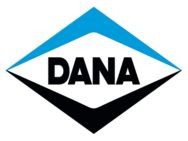Glossary of Heavy Machinery Transmission Parts
Heavy machinery is called upon to execute a variety of earthwork operations and construction tasks. Known as heavy equipment, engineering equipment, or heavy vehicles, heavy machinery functions by multiplying the ratio between force exerted and input force applied.
As one would imagine, it takes plenty of moving parts to keep heavy equipment operating correctly. Let’s take a look at some of the most important and ubiquitous transmission parts found on heavy equipment around the world.
Torque Converters
Generally located between a vehicle’s transmission and the engine’s flexplate, torque converters are hydraulic pumps that regulate the pressurization and flow of transmission fluid throughout the transmission of a piece of heavy equipment. Torque converters are round and consist of an inner pump assembly made up of fluid channels and small gears that rotate upon acceleration.
A torque converter supplies the force necessary to shift the transmission and allow it to engage the gears. Without a torque converter, the transmissions on dozers, back hoes, and other heavy equipment would not be able to properly function.
Air Clutches
Air clutches play an important role in heavy machinery operations as they are responsible for power and torque transference. A standard engine contains an output shaft that engages and transfers power from the flywheel to the transmission. Most heavy machinery, however, utilize power take offs, or PTOs, that serve the same function.
Air clutches use compressed air to engage the power take off, allowing it to spin or drive a peripheral device or component. Rather than using centrifugal force or hydraulic oil, air clutches are engaged or disengaged by compressed air. Increased air through the valve creates an upshift, while a reduction in air can cause the mechanism to downshift.
Pneumatic Clutches
Pneumatic clutches are quite powerful and often used on heavy machinery and large industrial equipment. They provide tremendous torque control, which is a requirement for any piece of heavy machinery. Unlike mechanical clutches that strictly involve the use of solid moving parts to perform the bulk of the heavy lifting, pneumatic clutches use compressed air to transfer energy from a machine’s engine to its other moving parts.
When disengaged, a pneumatic clutch will quickly shoot compressed air through the shaft and at the throw-out bearing, opening the clutch and desynchronizing the engine and the transmission. When it is re-engaged, on the other hand, air is bled out. At this point, springs release and it’s time to once again begin moving.
Heat Exchanger/Cooler
A heat exchanger or cooler is a specialized piece of equipment specifically built to efficiently transfer hot or cold air from one medium to another. Often, media is separated by a wall in order to prevent direct contact or mixing.
The best example of a heat exchanger can be found in an internal combustion engine. In these engines, which are used to operate most of today’s heavy machinery, engine coolant is used to flow through radiator coils. Meanwhile, air flows past the radiator coils as well, which helps keep the coolant cold and warm the incoming air.
Torque Fluid
Torque fluid is a form of hydraulic fluid that is used by torque converters. Torque fluid is essential for enabling clutches to shift gears when there is a noticeable differential between output and input. On some occasions, the differential can be quite high, and without torque fluid, heavy equipment would be at far greater risk of mechanical problems or transmission damage, restricting them to the use of mechanical gears.
The viscosity, or thickness, of the fluid helps in transferring pressure and aiding in the conversion process. While torque fluid with thicker viscosity is ideal for construction equipment and other heavy-duty machinery, it is less than ideal for smaller machinery. The thicker the torque fluid is, the more energy it is capable of transferring from the transmission.
Water-Cooled Brakes
While not necessarily considered transmission parts, water-cooled brakes are commonly used in dynamometers, mooring winch systems, towing winches, logging and forestry equipment, tension brakes, drilling equipment, and many other heavy machines, simply because they have been designed for extremely high heat braking conditions and constant slip.
Water-cooled brakes are actuated by air and cooled by an open or closed loop cooling system that provides them with a continuous flow of coolant. The air tube used for actuation is corrosion resistant and requires no special treatments or coatings. Servicing them in the field is relatively simple as well. Specifically designed for the dissipation of large thermal loads, water-cooled brakes are a popular option for many heavy machinery operators.
Power Take Offs
Power take offs serve a number of uses, and although they originated as tractor additions during World War I, they have been adapted over the years for multiple purposes. Today, power take offs are used to pump water through fire hoses, lift and release the loads of dump trucks, and even operate small cranes and wenches. Through their ability to transfer the power created by an engine to virtually any tool, power take offs can handle almost any task.
These transmission parts are vital for today’s heavy machinery. By understanding the critical components on your machines, you can keep them running strong and ready to tackle any job.

























